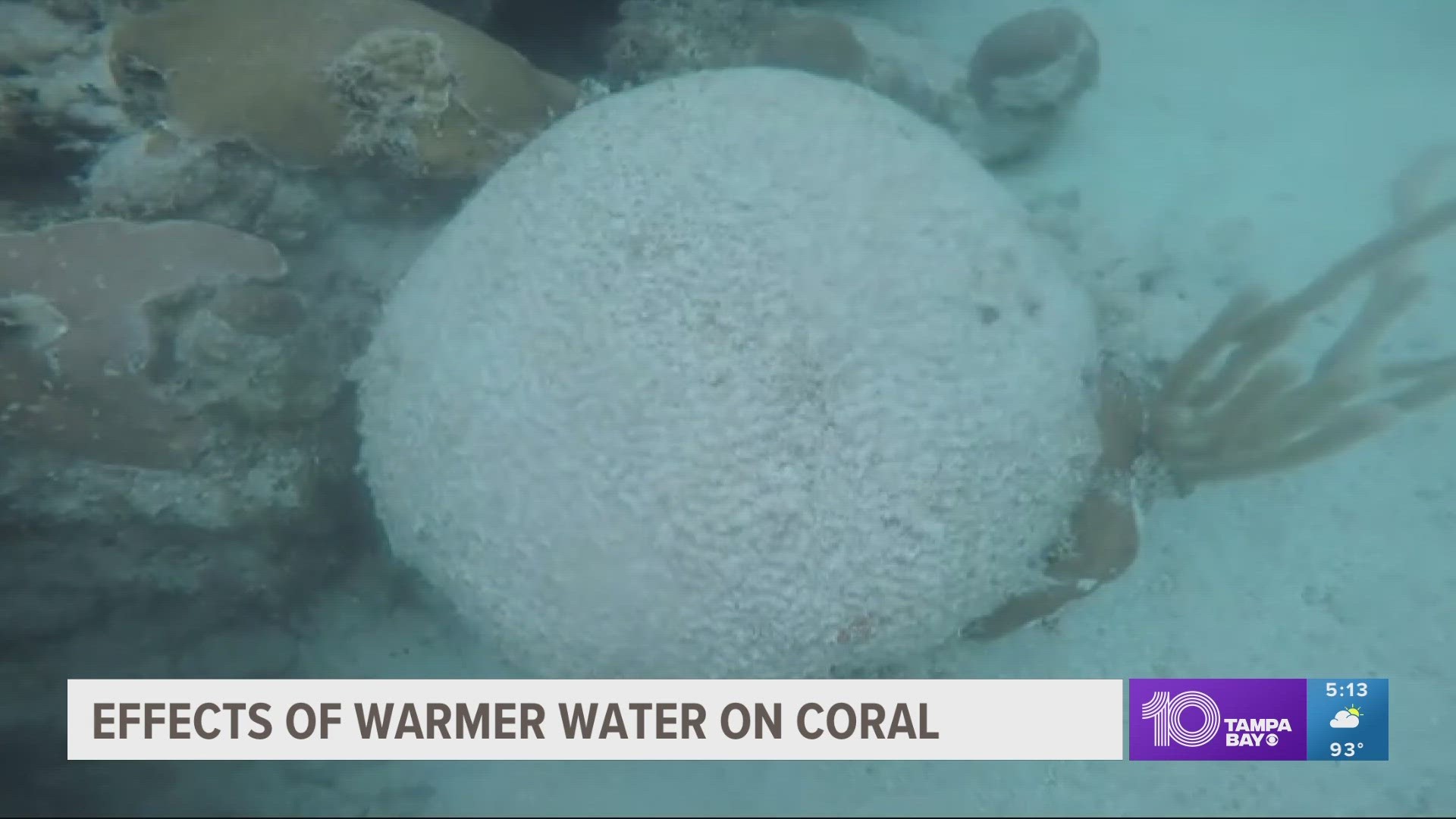ISLAMORADA, Fla. — Some Florida coral reefs are losing their color weeks earlier than normal, a glaring reminder of the toll record-high water temperatures are taking on our environment.
The corals should be vibrant and colorful this time of year, but are swiftly going white, Katey Lesneski, research and monitoring coordinator for Mission: Iconic Reefs, explained.
The reefs get their color from the algae that live inside them and serve as the corals’ food. The loss of color doesn't mean the corals are dead, but it does signal that they're under stress and their health is in danger.
“The corals are pale, it looks like the color’s draining out,” Lesneski said., who has spent several days on the reefs over the last two weeks. “And some individuals are stark white. And we still have more to come.”
Coral Restoration Foundation, a conservation nonprofit, said that 99 percent of corals at Cheeca Rocks, located off of Islamorada, are already bleached, including species known for being more resilient to changing temperatures.
NOAA has issued an Alert Level 2 for the Keys, the highest heat stress level on its scale. According to NOAA's website, an Alert Level 2 signals "severe bleaching and significant mortality likely."
According to Florida Keys National Marine Sanctuary Andrew Bruckner, some coral reeds in the Keys have already lost all their color which has never been recorded before Aug. 1. Bleaching usually happens in late August or September.
This comes as potentially-record-breaking ocean temperatures are being recorded in the Florida Keys.
A buoy in Manatee Bay, located between the Everglades and Key Largo, recorded a water temperature of 101.1 degrees Fahrenheit at 6 p.m. on Monday. Though not officially confirmed, the reading could break the record for the highest observed sea surface temperature of 99.7 degrees recorded in Kuwait Bay, according to a 2020 study.
It's not “all doom and gloom"
Coral bleaching is a serious concern that affects not only marine life but people that depend on coral reefs as a natural buffer against storm surge from hurricanes. There is also an economic impact because tourism from fishing, scuba diving and snorkeling is heavily dependent on coral reefs.
However, a 20-year, large-scale effort is underway to rebuild Florida's coral back to about 90 percent of where it was 50 years ago
Scientists explained that they're breeding corals that can better withstand the heat and are using simple things like shade covers and underwater fans to cool the water.
Still, researchers like Jason Spadaro from Mote Marine Lab & Aquarium have noticed that coral bleaching is worse in the lower Keys than in the more northern parts of the area. The Keys have experienced bad bleaching years in the past, but this year it is “really aggressive and it's really persistent,” he said.
“It's going to be a rough year for the reef. It hammers home the need to continue this important work,” Spadaro added.

